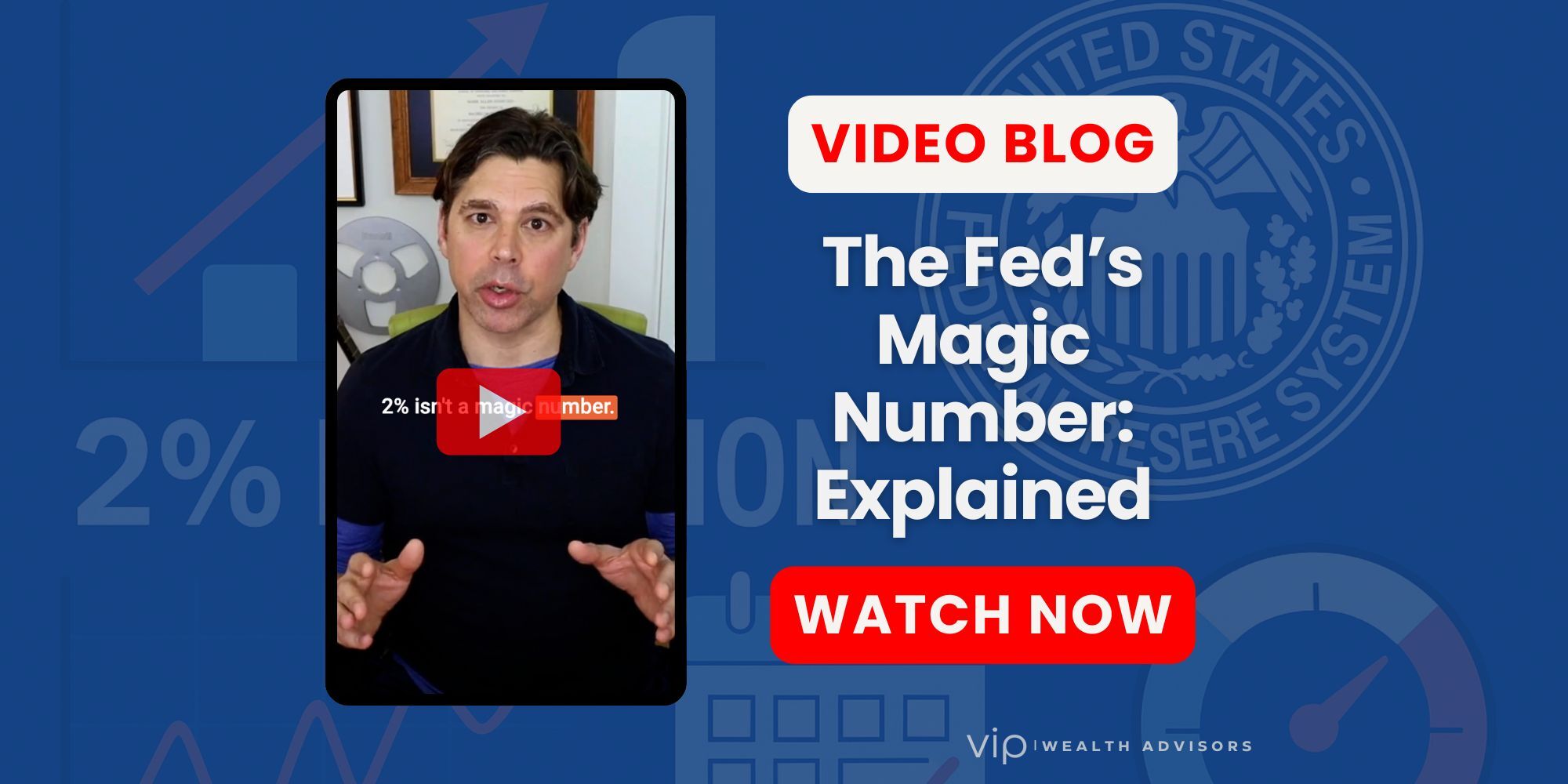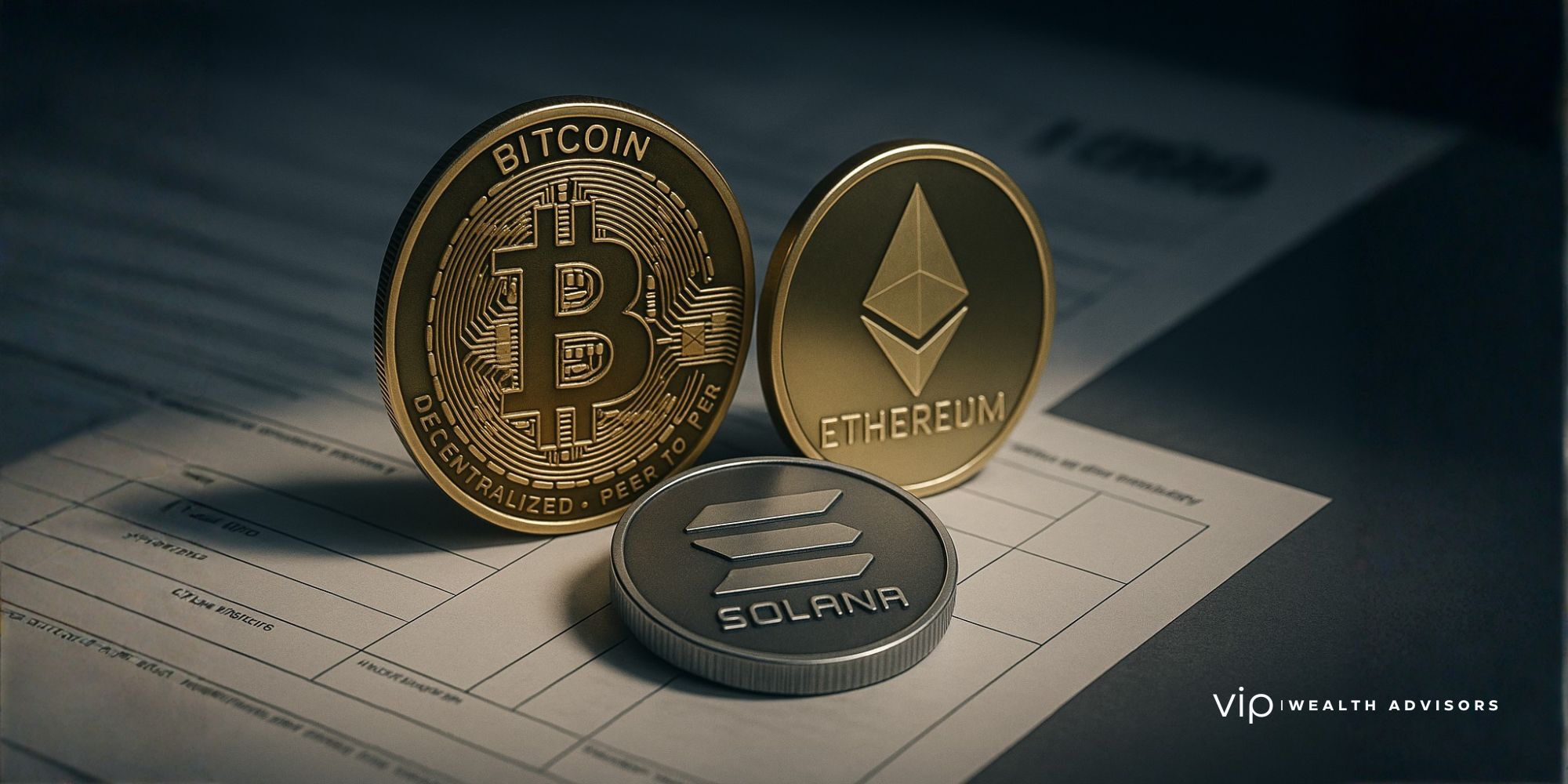When headlines scream about inflation surging or cooling, the number that keeps showing up is 2%. It's the Federal Reserve’s magic number, its North Star. But have you ever wondered: Why 2%? Why not zero? Or three? And what does it really mean for your portfolio, your purchasing power, and your long-term financial plan?
In this article, we'll unpack the origin, rationale, and modern implications of the Fed's 2% inflation target - plus what's changed in the wake of COVID and the 2020s inflation shock.
📈 The Basics: What Is the Fed’s Inflation Target?
The Federal Reserve's official goal is to maintain an inflation rate of 2% over the long term, using the Personal Consumption Expenditures (PCE) Price Index as its preferred benchmark. This target reflects the Fed’s dual mandate:
- Promote maximum sustainable employment, and
- Maintain stable prices.
2% inflation is viewed as the sweet spot where the economy is growing, wages are rising, but purchasing power isn’t being eroded too quickly.
🕰️ The History: How Did We Land on 2%?
🏛️ Before 2012: Implicit Targeting
For decades, the Fed avoided setting a public numerical target for inflation. Policymakers simply aimed for "price stability," a vague term left open to interpretation.
However, as other global central banks adopted explicit inflation targeting in the 1990s (notably New Zealand, Canada, and the U.K.), a global standard began to emerge around 2%.
📢 2012: The Fed Goes Public
Under Chairman Ben Bernanke, the Fed officially announced in January 2012 that it would target 2% annual inflation, measured by the PCE Index.
"Inflation at the rate of 2 percent … is most consistent over the longer run with the Federal Reserve’s statutory mandate." – Federal Reserve, 2012
This move was intended to anchor expectations, build transparency, and help consumers and markets better understand the Fed's policy.
🧠 Why 2%? The Logic Behind the Target
Deflation, when prices fall, may sound good, but it can cripple economic growth. A 2% cushion helps sidestep that risk.
✅ 2. Keeps Real Wages Flexible
With modest inflation, employers can offer smaller raises or even freezes without cutting nominal wages.
✅ 3. Protects Purchasing Power Over Time
At 2%, purchasing power declines slowly and predictably, making planning more manageable for households and businesses.
✅ 4. Global Consistency
Aligning with other central banks reduces cross-border currency volatility and maintains global economic stability.
📊 What Makes Up Core Inflation?
When the Fed discusses targeting 2% inflation, it often focuses on core inflation, that is, inflation excluding food and energy, which tend to be more volatile.
Major Components of Core CPI:
- Shelter (Rent & Owners' Equivalent Rent) — the most significant piece, making up 40%+ of core CPI
- Medical Services — hospitals, physicians, insurance (imputed)
- Transportation Services — airfares, auto insurance
- Apparel
- Household Furnishings
- Education and Recreation Services
The Fed watches these because they show underlying, or "sticky," inflation, the kind that's driven by long-term economic forces, not short-term shocks.
🔄 The Shift: From Targeting to Averaging
2020: Enter Average Inflation Targeting (AIT)
After years of undershooting 2%, the Fed introduced a new framework in August 2020 under Chairman Jerome Powell:
The Fed would aim for 2% inflation on average, not at all times.
That means after long periods of below-2% inflation (like the 2010s), the Fed would allow inflation to run hot for a while—above 2%—to make up for lost ground and ensure the labor market fully recovers.
🔥 Then Came the Inflation Surge (2021–2022)
After COVID-era stimulus, supply chain snarls, and pent-up demand, inflation spiked to over 9% by June 2022—well above the Fed’s comfort zone. Even core CPI, which strips out food and energy, hit 6.6% at one point.
This forced the Fed to pivot again—fast.
- Interest rates surged from near-zero to over 5% in less than 18 months.
- AIT became less emphasized as the Fed doubled down on returning inflation to exactly 2%.
- Markets now price every data point—especially inflation reports—as a clue to future rate policy.
📉 Where Are We Now? (As of August 2025)
- Headline CPI (YoY): 2.5%
- Core CPI (YoY): 2.7%
- Fed Funds Rate: ~5.00%
- Next CPI Release: August 13, 2025
We're nearing the target but not quite there. Sticky components like shelter and services continue to drive core inflation above the Fed's goal.
💼 What This Means for Investors
Inflation isn't just an abstract macro number—it affects real returns, tax brackets, interest rates, and long-term financial plans.
Here's what savvy investors should consider:
- Real Returns Matter:
A bond yielding 5% sounds great—unless inflation is 4.5%. You're only netting 0.5%. That’s why asset allocation should consider both nominal and real returns. - Interest Rate Risk Isn't Going Away:
Even as inflation cools, rates may stay elevated. Portfolios loaded with long-duration bonds or high-growth tech could remain vulnerable. - Tax Brackets Don’t Always Keep Up:
Many parts of the tax code (like AMT thresholds, Medicare IRMAA brackets, or Net Investment Income Tax limits) aren't fully inflation-adjusted, effectively creating "stealth tax hikes." - Cash Is Less Punishing—For Now:
With rates high, holding short-term T-Bills or money market funds can actually keep up with inflation, for now. But that may change fast when the Fed eventually pivots.
🧭 Planning Takeaway: Inflation Is a Policy Variable—Not a Constant
Investors often treat inflation as a background assumption, like 2% forever. But the last five years have shown us that inflation can:
- Overshoot for years
- Undershoot for a decade
- Shift due to global shocks and Fed recalibrations
At VIP Wealth Advisors, we build plans that don't just assume inflation behaves—we build in flex, contingencies, and strategic tax positioning to stay ahead of policy shifts.
🧠 Final Thought
2% isn't magic, it's a compromise. A balance between stability and flexibility. But whether inflation is at 2%, 4%, or higher, your financial life doesn't have to be at the mercy of macro forces.
With the proper planning, inflation can be navigated as a challenge rather than a disruptive threat.
📊 Want a Second Opinion on Your Inflation Assumptions?
Curious how inflation could impact your portfolio, taxes, and long-term projections? We can help you stress test your plan—and build strategies that work across economic cycles.
At VIP Wealth Advisors, we help tech professionals, business owners, and high-net-worth families plan for markets that move—and policy that shifts.
📅 Book a Planning Call
View More Articles by Topic
- Taxes (76)
- Financial Planning (40)
- Equity Compensation (34)
- Investments (23)
- RSU (21)
- Tax Policy & Legislation (18)
- Business Owner Planning (15)
- Incentive Stock Options (14)
- Retirement (14)
- Psychology of Money (10)
- Alternative Investments (9)
- Real Estate (9)
- AMT (8)
- Pre-IPO Planning (8)
- Estate Planning (7)
- Fiduciary Standard (6)
- NSOs (6)
- The Boring Investment Strategy (6)
- Capital Gains Tax (5)
- Crypto (5)
- QSBS (5)
- Post-IPO Tax Strategy (4)
- 401(k) Strategy (3)
- Private Investments (3)
- Q&A (3)
- Charitable Giving (2)
- ETF Taxes (2)
- IRA Strategy (2)
- International Financial Strategies (2)
- Irrevocable Trust (2)
- Legacy Wealth (2)
- Market Insights (2)
- Market Timing (2)
- Stock Market (2)
- Venture Capital (2)
- Video (2)
- AUM vs Flat Fee (1)
- Altruist (1)
- Atlanta (1)
- Book Review (1)
- Depreciation & Deductions (1)
- Education Planning (1)
- Precious Metals (1)
- QTIP Trust (1)
- Revocable Trust (1)
- Schwab (1)
- Solo 401k (1)








